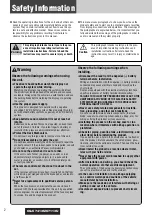
System Functions and Features as of I7.9
376
Features
sy
d-
020
0/3.
0
– I7.
9
– 1
1
.2009
Interaction with the Call Transfer feature
Situation:
Users A and B are in a call. B makes an enquiry call to C, who has forwarded to Voice
Mail. B presses a key (DTMF action) to establish a connection with user D (case 1, 2)
or with the mailbox of user D (case 3, 4).
•
Case 1: Call transfer with prior notice
D answers the call and B hangs up.
--> A is connected directly with D.
•
Case 2: Call transfer without prior notice
B hangs up even before D has answered the call.
--> As soon as D answers the call, he is connected with A. If D does not answer, a
recall is made to B.
•
Case 3: User B hangs up while D’s greeting is played back.
--> A is connected with D’s mailbox. The greeting is played back again.
•
Case 4: D’s greeting is played back. B leaves a message and hangs up.
--> A is connected with D’s mailbox. The greeting is no longer played back, but A
can also leave a message.
Note:
If user B hangs up during or after C’s greeting, A is connected with C’s mailbox. The
remaining behaviour is analogous to cases 3 and 4.
In each case user B can return to the first call, i.e. to user A, at any time using the
END key or the
Brokering
Foxkey.
8. 6. 1. 6
Scope
•
Depending on the configuration the Voice Mail System has between 2 and a
maximum of 16 Voice Mail channels, i. e. 2 or 16 incoming calls can be handled
simultaneously. Other callers obtain the busy tone.
•
A mailbox owner can choose from three personal and one global greeting. The
relevant greetings must be recorded beforehand and the mailbox owner must
have the appropriate authorization in the user configuration.
•
Once the total capacity of the voice memory or the maximum recording time con-
figurable for each Mailbox is reached, all subsequent callers forwarded to the
Voice Mail System obtain an overflow greeting. The overflow greeting remains ac-
tive until memory space is created again by deleting voice messages or greetings.
















































